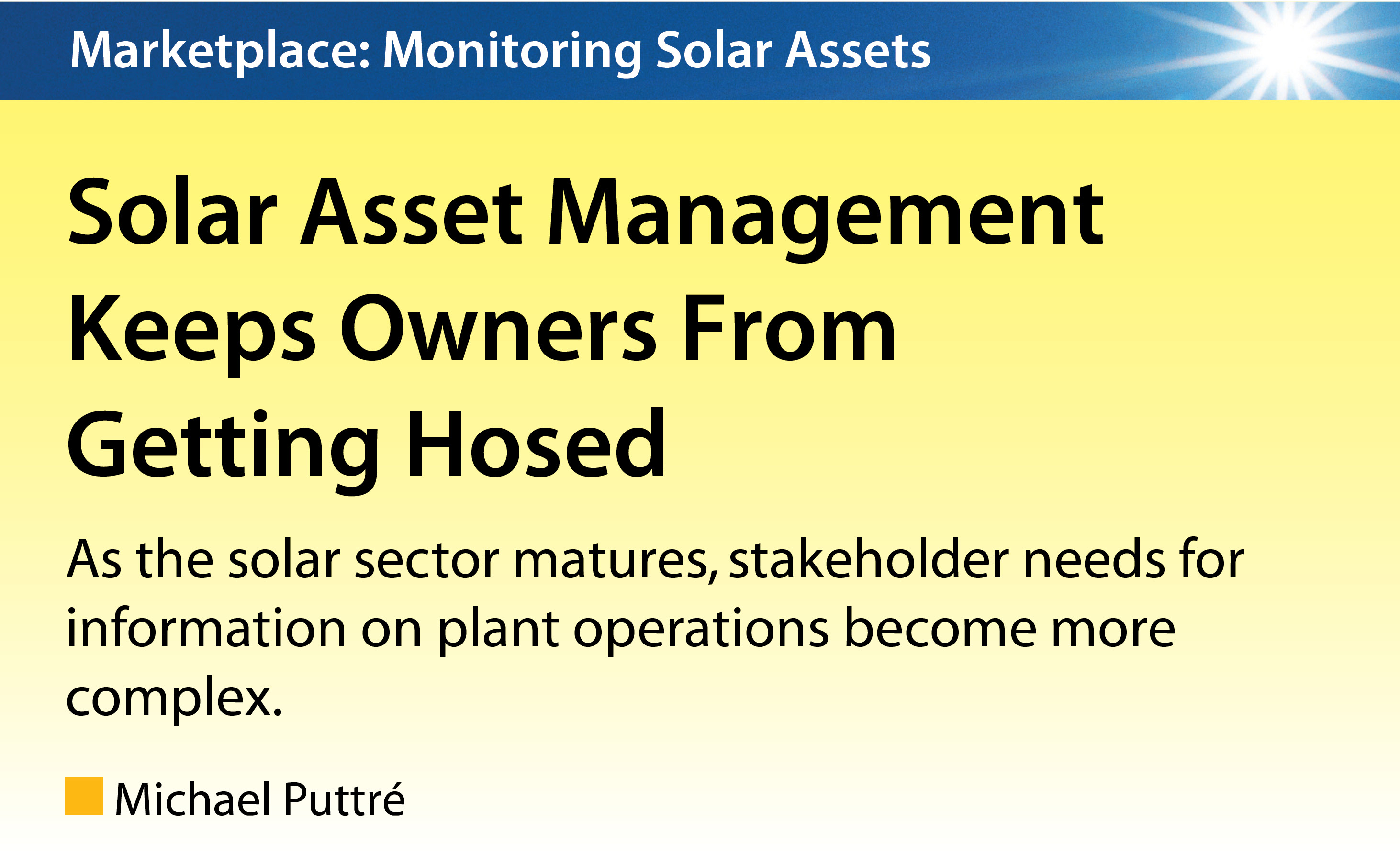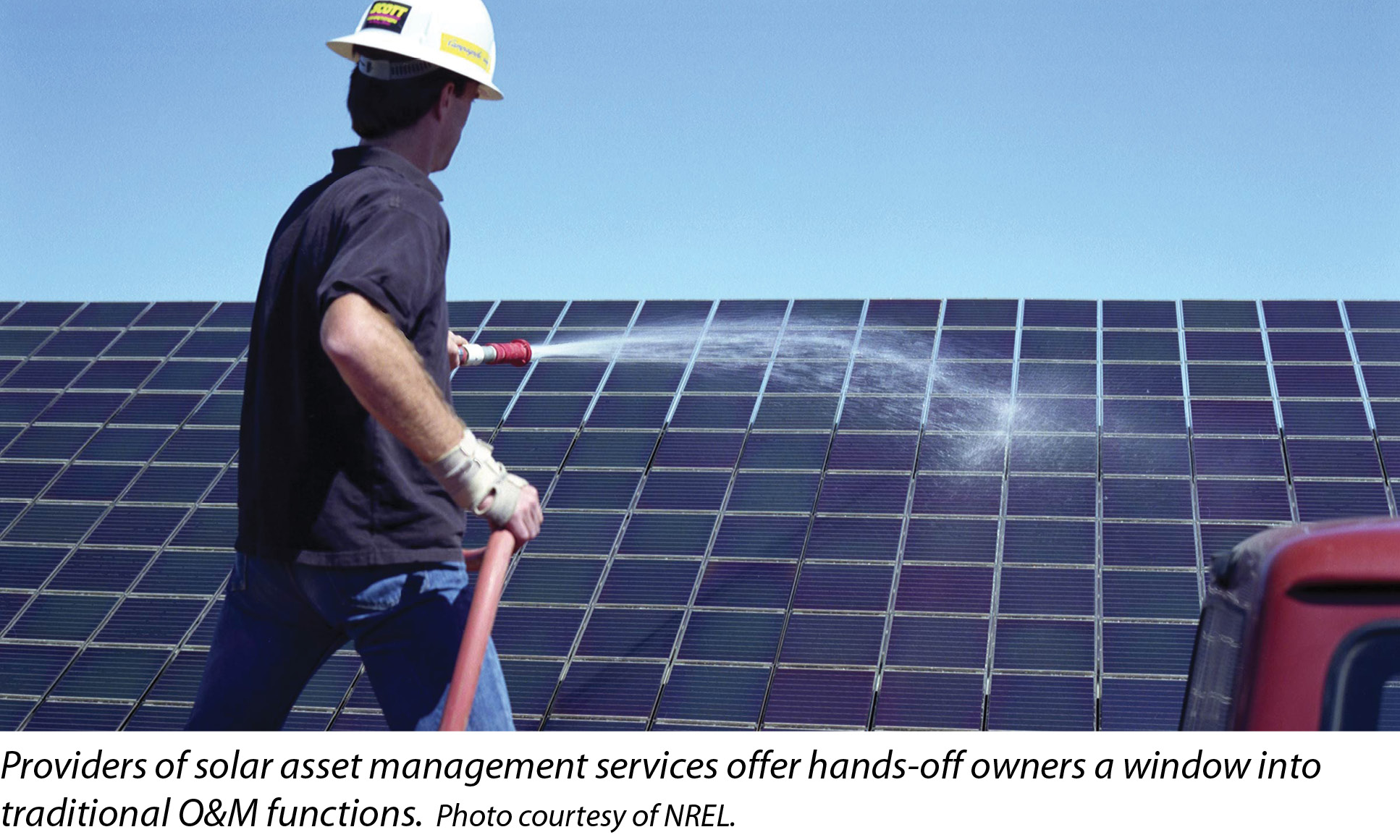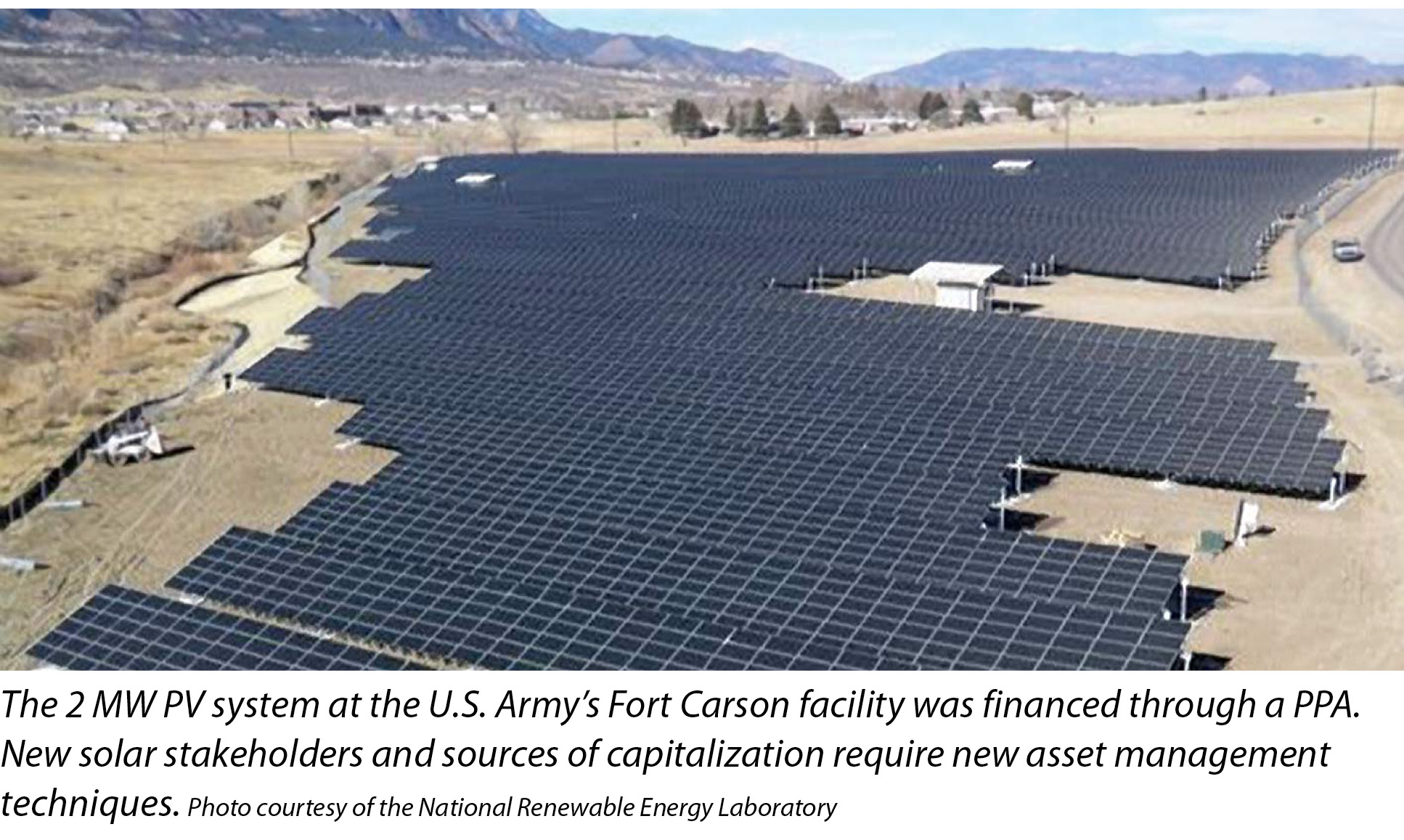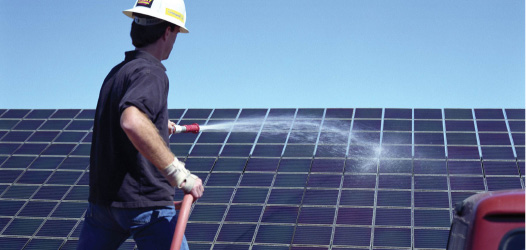

301 Moved Permanently
With every industry involving new technologies, there is an early adopter phase. The vendor and user communities are curiously intermingled, with the latter having a role in helping set the direction of the industry by providing feedback to incorporate into designs and business models. There is no place for disinterested guests at the early adopter party.
The solar sector has moved beyond the early adopter phase. It is not so much that the party is over - certainly few industries have so many enthusiasts and true believers - but new stakeholders are coming into play that view a solar power facility as an asset, not as a technological marvel. For these stakeholders, the fact that a photovoltaic plant converts sunlight into electricity is marvelous only insomuch as that electricity can be converted into money.
Historical gaps
Chad Sachs, CEO of Radian Generation LLC, a San Francisco-based provider of solar asset management services, says the recent dynamics of the solar sector have been driven by what he terms “misaligned incentives.” In particular, the investment tax credit (ITC) produced a rush of solar development based on expectations of upfront payments and short-term gains.
Of course, ITC-enabled projects may also be worthy producers of electricity and environmental benefits in their own rights. However, the incentive to get the project built and sold as quickly as possible so as to move on to the next one does not necessarily produce a class of assets for the ages.
“We came in to a portfolio about a year ago, and it just wasn’t a high priority for the owner to track it, to monitor it carefully,” Sachs says. “This was because the ITC really encouraged that upfront payment, and as long as it didn’t fall over, people were happy.”
Sachs says Radian primarily deals with operating assets. Some of its portfolio has been around for six or seven years. Even when the projects have been diligently maintained, there is not a lot of evidence of this because the historical data is not particularly complete.
“People did not invest in the right data gathering and monitoring equipment,” he says. “A lot of these systems have not been watched over carefully. So now we’re six years in, and people are ready to sell or monetize their situation, and the historical maintenance of these systems has not been great.”

Sachs says a lot of the potential buyers are what he terms passive financial capital entities that are interested in solar power plants as assets for reasons that have nothing to do with operations. Such owners want a steady stream of revenue that conforms to their expectations for making an investment.
“They don’t understand a lot of the risks,” he says. “Ideally, they want to invest and then stop thinking about it.”
Besides passive financial players, Sachs says a lot of developers decide to keep an ongoing role in their projects. Nevertheless, such developers still tend to make most of their money by getting more projects built and turned on, and in raising capital to fund that growth.
“What we see is that a lot of our customers have a quarterback in-house, and then they outsource to us, fulfilling on the asset management side,” Sachs says. “So that way, they can keep a good relationship with investors without having to staff up. They can do it more efficiently with us.”
David Young, head of solar asset management services for Huntington Beach, Calif.-based Solarrus Corp., says that based on his company’s discussions with its operations and maintenance (O&M) clients, very few of them really have a handle on the true cost of doing asset management in-house. He thinks this is true across the industry.
“We started out as an O&M company,” Young says, adding that the company’s True South Renewables group continues to handle traditional, technical services. “We started getting asked to do a little more non-traditional O&M duties. We discovered that there might be an unmet demand there.”
One aspect of solar asset management is technical oversight. While the O&M provider is performing or subcontracting the actual on-site work, somebody other than the people writing invoices has to make sure preventive and corrective maintenance is done accurately and cost effectively.
Also, O&M is not necessarily concerned with asset performance in terms of production.
“With O&M providers, a lot of times there is a set project, and they do what they are told,” Sachs says. “They aren’t necessarily trying to optimize certain situations. And in some cases, they will do the preventive maintenance necessary, but they are not necessarily taking the owner’s bottom line into account. You want people managing the asset who aren’t looking at it as just a repair job - that are looking at it from an owner’s perspective.”
As an example, Sachs cites a solar asset owner who had a part failure. The O&M provider told him something went wrong and recommended that he get a new part from China. He waited three months - with the system completely down - for this new part to arrive. The part arrived, and the O&M found the problem had been misdiagnosed. Another expert was called in to look at the problem and found it could be fixed in a week.
Young says intervention at this level represents something of a gray area between asset management and traditional, technical O&M.
“Sometimes clients would tell us they have noticed a systemic issue, and they asked us to put a team together and go out and solve it,” he says. “What we see in the evolving asset management business - that sort of task to go out and specifically solve an optimization problem, a systemic problem, a physical problem - is very much becoming part of the asset management definition. That started pushing us toward that gray area between asset management and O&M.”

Making connections
Solar equipment providers have an important role in charting these gray areas. Inverter manufacturers in particular are right there on the frontier, representing the point of contact between the solar asset and the wider world.
Mesa Scharf, senior manager of solutions engineering at Advanced Energy (AE), works on interfaces for the company’s inverters to enable integration with supervisory control and data acquisition (SCADA) systems, as well as AE and third-party monitoring providers. Such interfaces bind the wealth of information at the site and the inverter and make it available to various systems to manage uptime.
“We have a number of hooks in there that allow us to do anything from remote management, monitoring, software updates, etc.,” Scharf says. “So if these issues are identified, we can use the data, refine it, determine what is going on and then quickly roll a fix out if we need to.”
On the other end, Scharf says, AE has a set of high-level internal and external tools that are cloud-based on the Web that allows them to monitor the asset. With these tools, AE is able to look at this broad data stream beyond what end-user customers might be interested in or want access to.
“What we really work at is to tailor the interface for others to get that data,” Scharf says. “It allows us to offer products that minimize risk for these asset managers. In a lot of cases, we were able to identify an issue and understood what we wanted to do about it before they knew there was an issue.”
In the future, it is likely that solar asset managers will want to avail themselves of the information made possible by such interfaces and SCADA capabilities. Third-party application developers will almost certainly step in to create the means by which stakeholders can access the information they need to assume almost any conceivable asset management function.
Paper trail
Over and above the O&M sphere, somebody has to manage the bewildering number of documents and contracts associated with a solar asset: the power purchase agreement (PPA), site lease and interconnection agreement. Somebody must ensure that the key project documents and contracts that are so critical to these projects are complied and watched over.
“A lot of people have this notion that an investment-grade off-taker who is paying for power over 20 years is in a very safe situation,” Sachs says. “The reality is, especially in utility deals, that there are a lot of requirements in those PPAs. There are forecasting requirements, compliance requirements, safety requirements and curtailment issues you need to be aware of. So there is some complexity that people often underestimate within the contracts themselves.”
Then there is the day-in, day-out paper shuffling that goes with any business, such as billing and invoicing, insurance certificates, property tax appraisals, and myriad other forms that must be filed in a timely manner and maintained. Many companies would be delighted to offload these functions to focus on building the business.
“If companies look at the amount of senior or middle management time that is diverted away from things that make them money, they would be shocked,” Sachs says. These calculations were one of the factors that brought Solarrus into the solar asset management business. “Suddenly we’d get a call saying, ‘This monthly billing has been a hassle for us. Can you guys possibly do that for us?’”
Obviously, Sachs says, the client was not only looking to reduce its costs, but, like a lot of other companies, it wanted whatever overhead and personnel it had to be focused on service - servicing existing clients and obtaining new ones.
“They wanted to outsource as much as possible to keep their overhead and employee count low and focused,” he says.
On the other hand, sometimes such paperwork can be an important and valued point of customer contact. For example, Young describes one Solarrus client that is a regional developer of distributed generation solar projects for nonprofits, such as schools and community colleges.
“The way they developed over time, the contact with their client was extremely important to them,” Young says. “And regardless of cost or anything else, they didn’t want to lose that ongoing relationship. So, they did not want us to get involved in billing or customer-service calls. But literally everything else they wanted to outsource if possible.”
Ultimately, the solar development and ownership business will necessarily generate specialization as new players enter the field with specific business models. At the same time, the solar asset management business in its own right is more likely to be driven by those forces generating the capital that, in the future, must sustain the business after the “misaligned incentives” of the early adopter phase pass into history.
“You are seeing more efficient costs of capital, with securitizations and these yieldco companies, hopefully attracting more public market types of investments,” Sachs says. “But they are going to require good track records. They are going to require good historical analysis. Otherwise, they are going to be very conservative with how they make their investments. The more the industry can invest in making sure solar assets perform - and making sure that this is communicated well - the better job it will do in bringing down the cost of capital.” S
Marketplace: Monitoring Solar Assets
Solar Asset Management Keeps Owners From Getting Hosed
By Michael Puttré
As the solar sector matures, stakeholder needs for information on plant operations become more complex.


si body si body i si body bi si body b
si depbio
- si bullets
si sh
si subhead
pullquote
si first graph
si sh no rule
si last graph